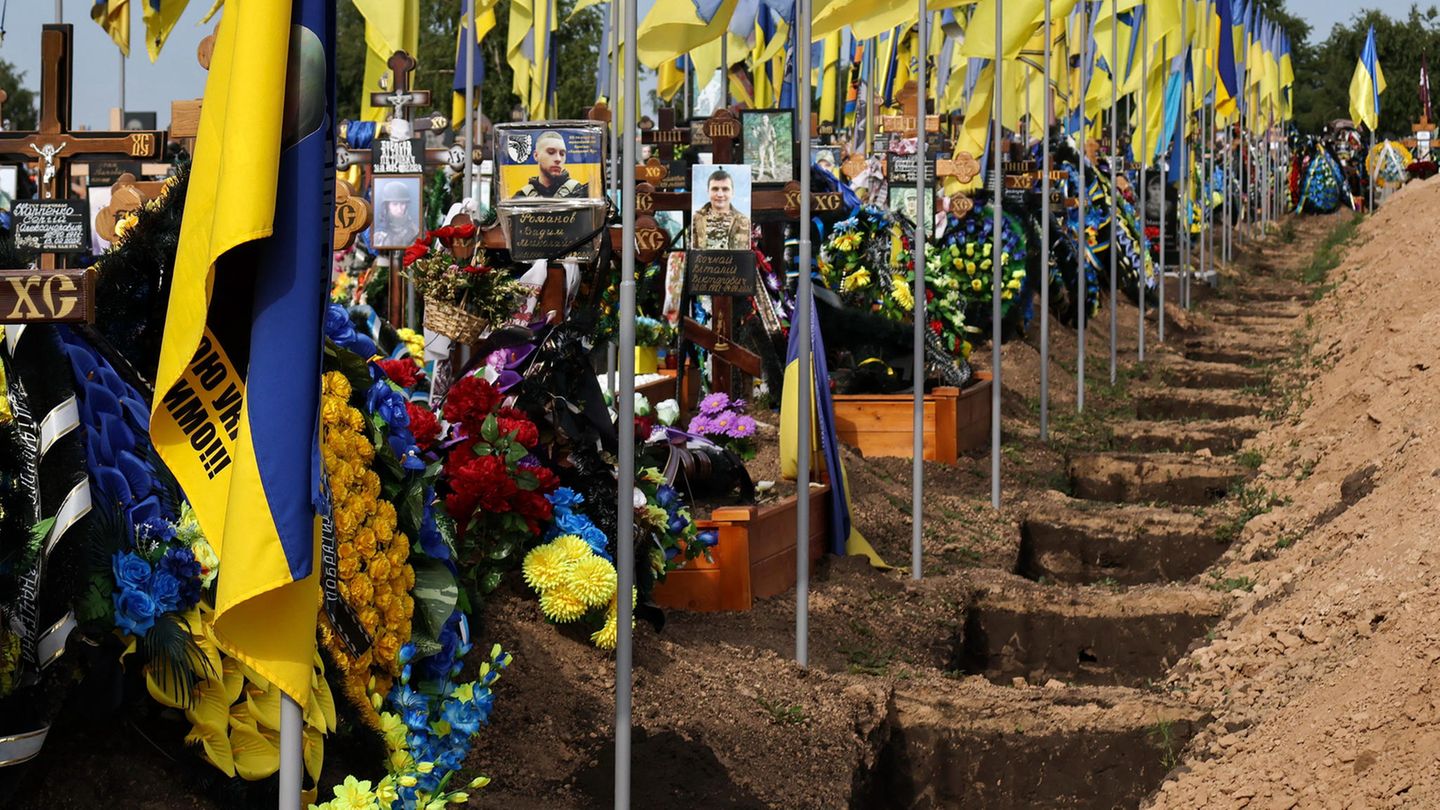Opinion
Against the backdrop of Putin’s war of aggression, Germany is discussing the reintroduction of conscription. The massacre in Ukraine proves that the basic training of short-term soldiers is just a ticket to the afterlife.
There is much that is unclear about how the new draft will look in practice. Will women have to serve? How long should the service last? How many people does the Bundeswehr actually want to recruit from a cohort of around 700,000 people? Probably not 50,000. But who will then pay for the social services of the remaining 650,000?
This is all still very nebulous. The cloudy Pistorius project is countered by an irrefutable truth from the war in Ukraine. And it is: poorly trained conscripts have no chance of survival. Not bad chances – no chance. They are pure cannon fodder and survive about eight hours of street fighting. Anyone who wanted to could have heard this the whole time of the war. Ukrainian and Russian veterans regularly report how new recruits appear in their positions and disappear again as 200 (dead) or 300 (wounded).
Ukraine: Come to die
Only born warriors and people with a long military history can last longer on the front lines. This will be no different for short-serving Bundeswehr recruits. Training in a comfortable peacetime army without real combat experience will probably be worse than in combat forces where the instructors have survived the inferno of drones, mines and artillery. For the conscript with short training who is called back into the army after a few years in civilian life, death is the bitter prospect. The fighters in Ukraine know this. A Russian commander greeted his new men by saying that they should be aware that none of them would survive the war. The only thing that would remain of them was the eternal memory of the motherland – that was his consolation.
Compulsory military service always means brutal coercion
The war in Ukraine teaches us even more. Professional soldiers like to romanticize conscription with images of convinced young men who rush to the flag with enthusiasm. But conscription was and is always intended as a form of coercion. Anyone who did not want to do so was persecuted and punished. This naked violence against those who did not want to do so was always associated with conscription, and by no means only in the Nazi dictatorship. Today, not all Ukrainians want to fight for their government.
Over 600,000 draft evaders are officially said to be in the EU, plus those who have found refuge in third countries from Turkey to Thailand. And those who have sought refuge with Putin. The bodies of those who drowned while trying to escape show how serious these people are. There are also cases of self-mutilation and the trend of committing mediocre crimes, getting caught and waiting out the war in prison.
The rich can – but they don’t have to
This war also shows that not everyone has to fight. Those who have money and connections can buy their freedom. For example, with a certificate that allows them to travel abroad without risk. The children of the upper class are not to be caught anyway. They have the right passport – not just the Ukrainian one. This allows them to study abroad legally. Perhaps the situation in Kiev is more corrupt than here, but the elite in Germany will also succeed in keeping their offspring away from the trenches. Especially when the chances of survival there are almost zero.
Compulsory military service has nothing to do with democracy
It is often said that conscription is the legitimate child of democracy. In the 19th century, however, all major wars were based on conscription, whether the countries had an elected government or were ruled autocratically by dictators or monarchs. If we leave aside the levies of free peasants in antiquity and the Middle Ages, modern conscription is based on the French Revolution.
A giant leap for mankind, with a very bloody and undemocratic downside. It only took a few years before conscription was made to serve Napoleon’s megalomaniac ambitions. It provided him with the human material he needed for his wars against the rest of Europe, completely legally. Until entire generations of young men in France were practically wiped out.
End of military service
The death of Antoine Fauveau shows what the great honor of serving the nation actually looked like. The young man was a shepherd or dairyman. After a mini-training of seven days, his emperor threw him into the Battle of Waterloo – the desperate attempt of the broken Napoleon to bring Europe under his thumb again. Antoine gave his best, his young life, he broke through the British lines until he was hit by a cannonball. His armor survived, and his body, like that of all the other unfortunates, was turned into fertilizer for profit.
Source: Stern
I have been working in the news industry for over 6 years, first as a reporter and now as an editor. I have covered politics extensively, and my work has appeared in major newspapers and online news outlets around the world. In addition to my writing, I also contribute regularly to 24 Hours World.




